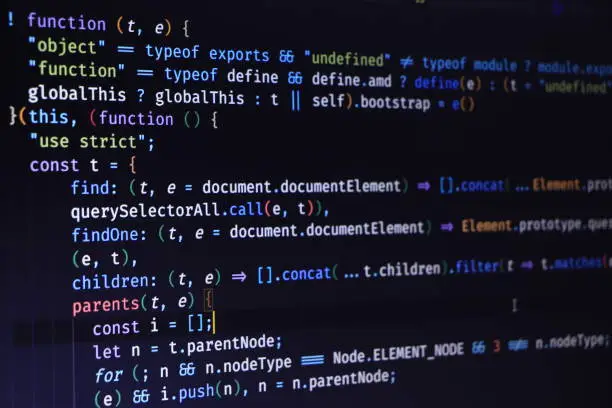Welcome to the age of digital whispers, where every click, tap, or swipe leaves a trace in the vast realm of cyberspace. As we dance through the interconnected web of data, the need for trust and security has never been more crucial. Enter the unsung heroes of the digital world: cryptographic algorithms and protocols. In this article, we embark on a journey through the digital wilderness, exploring not just the mechanics but the personalities and quirks of these digital guardians that keep our secrets safe and our transactions secure.
Cryptographic Algorithms: The Quiet Wizards of Encryption
Symmetric Encryption: The Trusted Confidant
Meet AES, the Advanced Encryption Standard, and its predecessor, DES, the Data Encryption Standard. Think of them as trusted confidants in a secret meeting. They use a shared secret key, a key they guard with the zeal of a well-trained sentinel. Their strength lies in their efficiency—quick and nimble in the art of encryption and decryption. Yet they demand a secure space for key exchange, much like a secret handshake among friends.

Asymmetric Encryption: The Dynamic Duo of RSA and ECC
Picture RSA and ECC as the dynamic duo of the Cryptographic algorithms world. They operate in pairs: a public face and a private soul. RSA, the seasoned veteran, and ECC, the sleek newcomer using elliptic curves, dance to the asymmetric rhythm. One encrypts with a public key and the other decrypts with a private key. Together, they weave the intricate dance of secure communication, ensuring that only the intended recipient can unlock the digital treasure trove.
Hash Functions: The Custodians of Data Integrity
SHA-256 and MD5, the custodians of data integrity, are like vigilant librarians cataloging every book in the digital library. These hash functions create unique fingerprints for each piece of data, ensuring that any unauthorized changes are detected. Much like an eagle-eyed librarian noticing a dog-eared page, these hash functions catch even the slightest alterations in the data they guard.
Digital Signatures: The Virtuosos of Authentication
Imagine DSA and ECDSA as virtuosos wielding the pen of authentication. When they sign a digital document, it’s not just a signature; it’s a seal of authenticity. They assure the world that the content is untouched and the sender is who they claim to be. In the grand orchestra of digital communication, these algorithms play the tune of trust and credibility.
Cryptographic algorithms: The Conductors of the Secure Symphony
TLS: The Maestro of Secure Communication
TLS, formerly known as SSL, is the maestro orchestrating secure communication on the internet. It’s the protocol that ensures the safety of our online conversations. Picture TLS as a benevolent conductor guiding the symphony of data between your device and the server. It uses a blend of asymmetric and symmetric melodies to encrypt the notes, shielding them from prying ears and wandering eyes.

IPsec: The Guardian of Network Tranquilly
In the vast landscape of network communication, IPsec stands tall as the guardian of tranquility. It envelopes each packet in Cryptographic algorithms, ensuring that the journey from sender to receiver is not just swift but secure. It’s like a digital superhero, swooping in to protect the integrity and confidentiality of data at the network layer.
PGP: The Chameleon of Secure Communication
Pretty Good Privacy, or PGP, is the chameleon of secure communication. It wraps itself around emails, files, and digital messages, camouflaging them from prying eyes. PGP is the trusted companion of those who value privacy, a digital envelope that ensures only the intended recipient can unveil the secrets within. It’s the pen pal you can trust with your deepest thoughts and most sensitive information.
SMPC: The Diplomat of Collaborative Computing
Secure Multiparty Computation, or SMPC, is the diplomat of collaborative computing. It enables multiple parties to engage in joint computation while keeping their inputs private. SMPC ensures that even in a room full of untrusted players, the collective computation remains secure. It’s the digital roundtable where rivals can collaborate without revealing their strategic cards.
Cryptographic algorithms: Bringing the Algorithms and Protocols to Life
In the digital realm, where codes and protocols may seem cold and mechanical, it’s essential to remember that behind every algorithm and protocol, there’s a human touch. These Cryptographic algorithms guardians are not just lines of code; they are the architects of digital trust and the custodians of our virtual identities.

AES and DES: The Silent Guardians of Secrets
AES and DES, the symmetric encryption stalwarts, are the silent guardians of secrets. They’re like trusted friends who keep our confidence locked away from prying eyes. Much like a well-kept diary hidden under the mattress, they ensure that our digital secrets remain known only to those we trust.
RSA and ECC: The Dance Partners of Encryption
RSA and ECC, the asymmetric encryption dance partners, are the Fred Astaire and Ginger Rogers of the Cryptographic algorithms world. They twirl and whirl, ensuring that the dance of secure communication is both graceful and foolproof. Picture them in a ballroom of bits, orchestrating a Cryptographic algorithms waltz that dazzles and protects.
SHA-256 and MD5: The Librarians of Digital Cataloguing
SHA-256 and MD5, the hash function librarians, take meticulous care of our digital catalog. They are like the librarians who know every book on the shelf by heart. When a page is dog-eared or a word is changed, they raise the alarm, preserving the integrity of our digital archives with unwavering dedication.
DSA and ECDSA: The Maestros of Digital Signatures
DSA and ECDSA, the digital signature maestros, sign our digital symphonies with a flourish. They are the conductors who ensure that every note is played as intended, adding an air of authenticity to the vast digital orchestra. In a world of digital impersonations, they stand as the guardians of true identity.
TLS: The Maestro Behind the Curtain
TLS, the maestro behind the digital curtain, ensures that our online conversations are not just secure but also harmonious. It’s the guardian of our digital serenades, orchestrating a seamless flow of encrypted communication between distant hearts. In the grand opera of the internet, TLS is the unseen maestro conducting the symphony of secure connections.

IPsec: The Silent Protector of Data Pathways
IPsec, the silent protector of data pathways, stands guard over the highways and byways of digital communication. It’s the digital sentinel that ensures that our data travels safely through the vast expanse of the internet. In a world where data travels at the speed of light, IPsec is the unyielding guardian of the network.
PGP: The Trusted Confidant of Digital Correspondence
PGP, the trusted confidant of digital correspondence, is the friend you can trust with your deepest thoughts. It’s the digital envelope that seals your emails and messages with a promise of confidentiality. PGP is the pen pal who guards your secrets.
Related article:
Exploring Encryption and Decryption Techniques: Safeguarding Information in the Digital Age 2023
Unraveling the Enigma: Basic Cryptographic Concepts Demystified 2023
Cryptography Fundamentals: Safeguarding Your Digital Realm 2023
